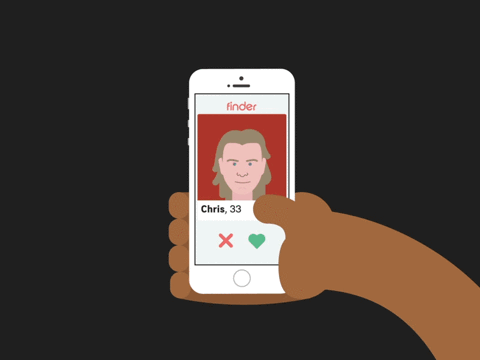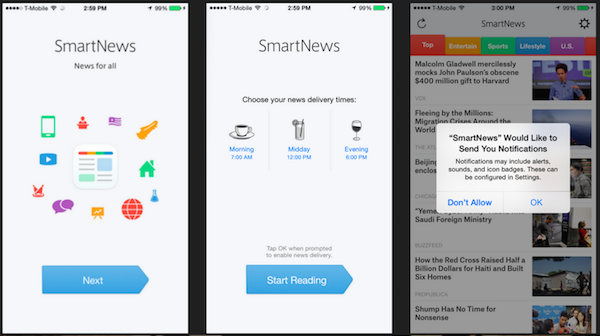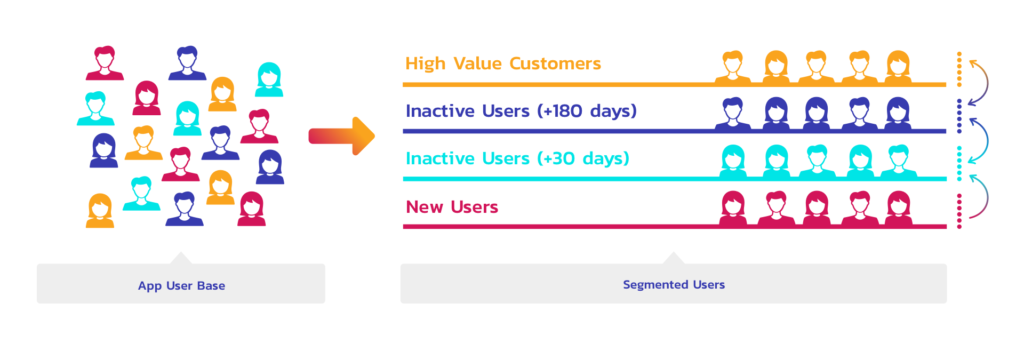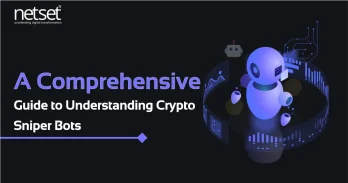User Experience and User Engagement are the two significant slants a company focuses on from its revenue lens and looks for anticipating ways to let their customers slide through their custom conversion funnel.
And these two facets led Personalization to gain great hype and become an omnichannel business strategy to consistently power user engagements, conversions and generate top-line revenue.
“Personalized experiences add to a 20% hike in sales.”
Personalization!
By this, we simply understand to tailor the experiences as the user demands for them.

Moreover, by implementing realistic ideas, strategies, and techniques, personalization has laddered to reach the state of Hyper-Personalization where the one-size-fits-all trick doesn’t work and requires you to segment users, know their different intents, and deliver them an end-to-end solution.
There is a need to understand that in present times, user experience becomes customized to user needs, and achieving optimal personalization implies providing state-of-the-art UX.
Rules to Embed while Facilitating App User Experience via Personalization

Rule 1:
Use Personalization to Enhance User Experience
Users are not assets or data points, they are valuable kernels of your business. Users expect Value in exchange for their vote of trust.
Did you know?
46% of the consumers hesitate to share their personal information expecting they won’t receive any value in exchange. (source)
Personalization is to serve first, sell later and this forms the mantra to drive engagement and strengthen the relationship that the end customers build with your brand. Trading isn’t always about making money and even if it is, it asks for making some strenuous efforts towards the consumers first to revert fruitful results.

Marketers must understand that user data is no shortcut to their wallets, today’s consumer is more aware and updated today and wants you to know them closely, understand what makes them tick and then stand beyond their expectation.
Rule 2:
Never Misuse User Privacy
User Privacy is a concern to which users are paying deep heed to. With witnessed cases of data loss and breach, users wary to grant unnecessary access to the sensitive information they possess.
This is the significant reason, app developers must understand, for masses to opt for either uninstalling them or downloading them in the first place. To leverage your app user experience and get it a positive impact, it must ask for user permissions in a relevant context, thus, clearly communicating the benefit(s) of allowing them

Rule 3:
User Segmenting is an Obligatory Need
From a marketing point of view, we have seen the significant role played by user segmentation. And when the talk is about personalization it means segmentation stripped to its roots.
Very often users are targeted for segmentation based on their role, location, gender, and preferences, and it’s necessary to track their behavior and retain them concreting compelling app marketing campaigns and strategies.

Say, you possess a travel app and certainly, it would have a segment directed to the most particular and preferable places of visit (like Hawaii). Personalized messages, emails, push notifications would work to book hotels and tour experiences.
But how about notifying them of the great excursion deals on Caribbean Cruise, Asia’s Top Beaches, or even a relaxing weekend getaway journey to a spa?
Surprising and delighting with new app features and introducing something exceptionally new which users would love and appreciate becomes an effective reason for segmenting. Highly targeted campaigns with a mix of broad messages that spotlight advanced features/services can nudge users to explore every bit of your app.
Rule 4:
Use Personalization where Expected

Personalization is to surprise users in a delightful way, not a creepy way.
Say, you booked a ride to your Aunt yesterday with Uber, and the next day you receive a notification repeating the same ride to the same place from another service provider (say Ola), definitely, this would seem scary.
In most cases, users will be surprised and raise brows in fear about another brand pulling information, tracking your rides and current locations, and offering you deals.
Don’t reach the spooky level of personalization and apply it to scare your users. Your mobile application must have the choice for opt-in and opt-out permissions which they may grant or revoke as per their wish.
[Prefer Reading: “Mobile App Personalization: An Opportunity for Business Disruption.”]
What does Personalization mean for UX?
#Personalization is Anticipatory
When you personalize your content, website, product, or app, you need to anticipate the desires of users. Catching the right match and rendering something useful to them as a surprise gives users escapade experiences and takes those to a new level.
#Personalization is Dynamic
The content offered by your app if isn’t personalized and if not aligned with the interest of the app users, they may end uninstalling the app or start ignoring it to open.
Dynamic Personalization enables content to learn and adapt allows you to deliver something valuable and useful to the end customer based on the user’s crucial data points like characteristics, history, patterns, behaviors, attributes, data analysis, and more.
Did you Know?
Dynamic personalization makes use of algorithms to personas (a semi-fictional image) of their potential customers, their needs, and buying habits based upon factors like demographics, geolocation, behavior, and device.
[Prefer Reading: “Business Growth Tactics to Keep Up the Pace in 2021 [100% Proven].”]
Simple & Effective Ways to Start Personalizing your App User Experiences
-Create complete user profiles with the context in mind
Delve into mobile analytics to measure the impact of changes in your app with your KPIs. Create deep customer segments and share audiences across platforms to develop comprehensive user profiles.
-Create custom content within the app
Dynamically modify the elements of the app, such as banners, content items, the order of products, colors, and buttons. Create tailor-made experiences for individual segments.
-Offer product and content recommendations within the app
Boost retention and engagement, as well as the duration of each session, by recommending relevant items based on user behavior or individual affinities.
-Increase engagement with messages within the app
Anticipate user needs, create a sense of urgency, and increase engagement by customizing offers for newsletter subscriptions, recommendation overlays, social proof messages, app tours, and more.
-Optimize the performance of any element of the app
Run contextualized and segmented experiments anywhere and take advantage of the optimization engine to display the right variable and improve KPIs without lifting a single finger.
-Get personal with push notifications and emails
Create more personal communication with push notifications and emails
Get latent users back to your app with perfectly synchronized personalized emails and messages with push notifications, which are activated at the right time and go to the right profile.
[Prefer Reading: “Multi-Experience Evolution: New Experiment in Mobile App Development.”]




